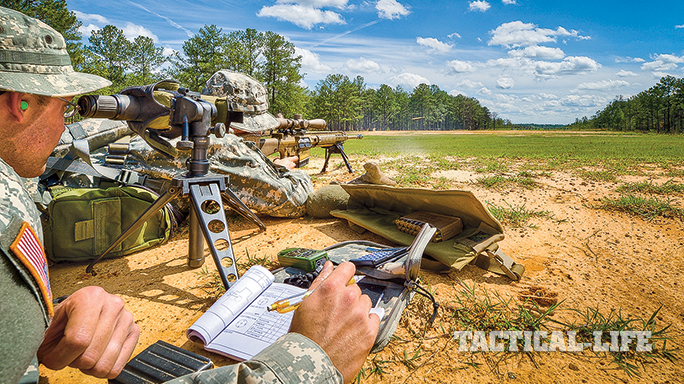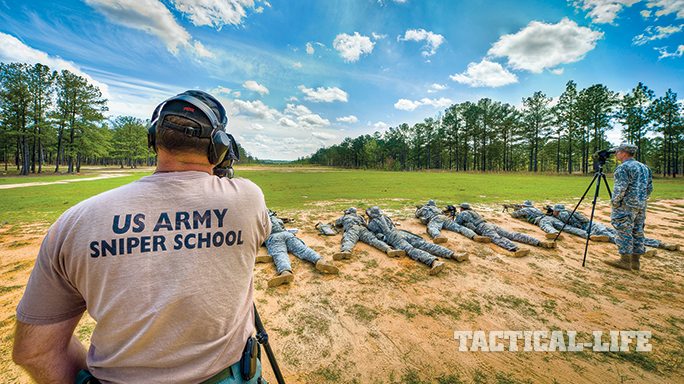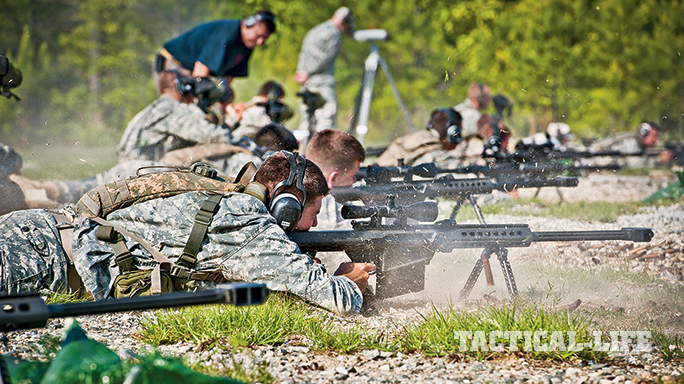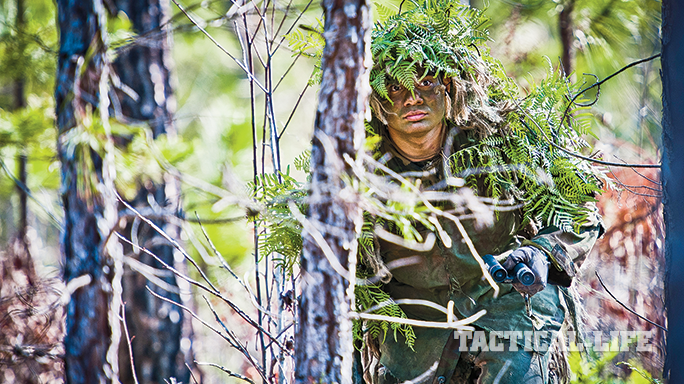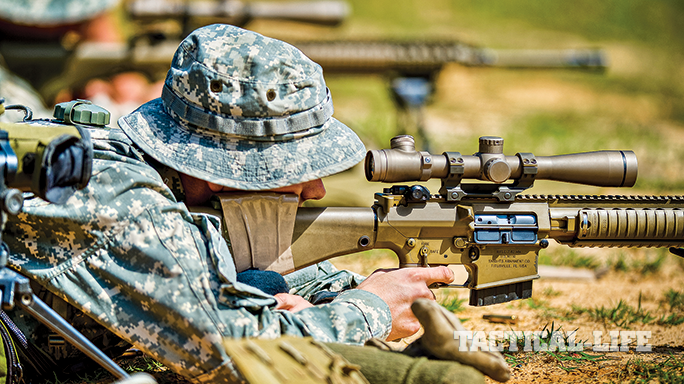America didn’t invent the term “sniper,” but since 1955, when the U.S. Army operated its first sniper school at Camp Perry, Ohio, we’ve been trying to perfect it.
According to the Army Sniper Association, the British coined the now-infamous term during the 1800s while they occupied India. Whether you’re in the British Army or the U.S. Army, the primary missions of a sniper remain the same: long-range precision fire and gathering intelligence.
The U.S. Army employed snipers long before it finally built a dedicated sniper school at Fort Benning, Ga., in 1987. As far back as the Revolutionary War, skilled marksmen (sometimes called “sharpshooters”) have wreaked havoc on larger enemy forces with concealed and accurate fire, often pinning down units or simply killing key targets to weaken and demoralize the enemy. We weren’t the only ones who knew the power and intimidation a well-trained sniper can cause. The British, the Germans and the Soviet Union all trained and employed skilled snipers in combat. In fact, it was the Soviets who first used two-man teams during World War II and employed more than 2,000 female snipers as well. Fast-forward to today. The U.S. Army understands the role well-trained snipers play in modern warfare and puts its best candidates through a seven-week course covering marksmanship, range estimation, target detection, stalks and written exams as core competencies.
Advertisement — Continue Reading Below
Back To School
I recently had a chance to visit the U.S. Army Sniper School, and what I learned surprised me. “The people who do the best at U.S. Army Sniper School are the ones who don’t know anything before they get here,” said Non-Commissioned Officer in Charge Sergeant First Class Jeremy Mangione.
Mangione explained himself a little further. “I can take a soldier who is horrible and teach him how to shoot pretty well. But the know-it-all? Not so much. I can teach you how to run faster and how to shoot well, but what I can’t teach you is what to do when I’m not there. I need to trust you.” Trust, it seems, is the ultimate quality in a sniper because the ultimate decision a well-trained sniper makes can be the difference between victory or defeat and the lives of a few or even many. “Targets are decisions,” Mangione said. “Is the guy at 200 yards easier? Maybe yes, but is he as valuable as the target at 600 yards? The sniper needs to know.”
Advertisement — Continue Reading Below
Sniper candidates must pass through seven weeks of training to earn the title of “sniper.” The breakdown in training goes like this:
- Week 1: Stalking, range estimation, target detection
- Week 2: M110 marksmanship, ballistics
- Week 3: M110 data gathering, written exam
- Week 4: M2010, night shoot
- Week 5: Unknown-distance qualification, M9 pistol, movers
- Week 6: Alternate firing positions, M107, final exam
- Week 7: FTX, final shot, graduation
Snipers use three primary platforms, including the 7.62mm Knight’s Armament M110 rifle, the M2010 in .300 Winchester Magnum and the Barrett M107 in .50 BMG. According to Mangione, snipers create opportunities to surgically remove strategic targets from the battlefield, prearrange precision fire, serve as overwatch for enemy areas, shut down key pieces of terrain and completely demoralize the enemy.
Top Shots
Advertisement — Continue Reading Below
Sniper candidate Sergeant Travis Browning, from Michigan, served two tours in Iraq and one in Afghanistan before he made it to sniper school.Browning said he was always envious of snipers when he came into the U.S. Army and wanted to be one. So far the training is working, too, and not just according to Browning. “Maybe he has the right things to make it as a sniper,” Mangione said.
“I learned a lot during Week 4. There was a lot of stuff I was still doing wrong. Windage and elevation adjustments were getting me, and now stalks are a challenge, but I’m becoming more well rounded and a lot more meticulous,” Browning said. “I have to do all the jobs of an 11B [infantryman] and then some while having a heightened sense of awareness.”
Mangione said a soldier could become the right person for the job of sniper because, in reality, 90 percent of it comes down to observation, which supports the intelligence-gathering component as well, and only 10 percent of the sniping is actually shooting. In fact, Magione said he looks for people who are flexible and willing to learn and adapt. “The best snipers are the ones who are willing to change and are humble. Show me a prima donna and give me the opposite of that.”
Advertisement — Continue Reading Below
Despite the Hollywood hype when it comes to snipers, Mangione said successful snipers are low key. They tend to keep to themselves and stay under the radar in everything that they do. As Mangione put it, “If you walk around like you’re better than everyone else, you’ll think you’re better than the enemy, and that can get you killed.”
For more information on the U.S. Army Sniper School at Fort Benning, please visit benning.army.mil.
RELATED STORY: Special Report: Chris Kyle’s American Sniper Steel
